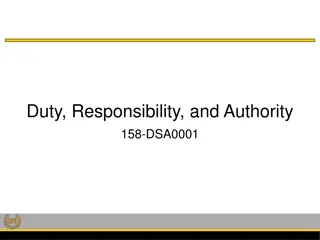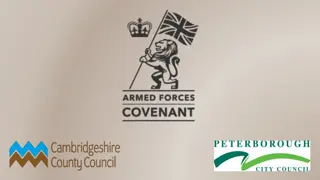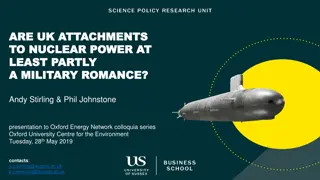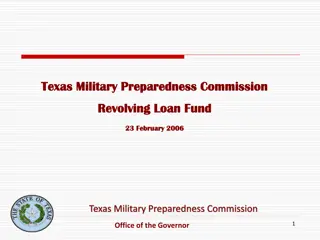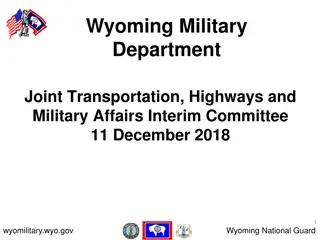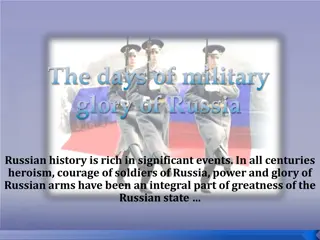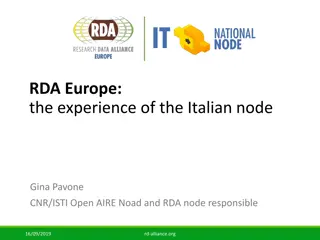Italian Military Policy and National Challenges: A Historical Analysis
The history of Italian military policy from 1860 to 1960 reveals a complex relationship between the army, state, and society. The military's role in defending new territories and maintaining internal order, along with its performance in battles such as Lissa and Custoza, reflects a transitional period marked by shifting priorities and challenges. Leaders like Giolitti navigated social unrest while balancing civil rights and state survival, and the influence of political Catholicism added another dimension to military conservatism.
Download Presentation

Please find below an Image/Link to download the presentation.
The content on the website is provided AS IS for your information and personal use only. It may not be sold, licensed, or shared on other websites without obtaining consent from the author. Download presentation by click this link. If you encounter any issues during the download, it is possible that the publisher has removed the file from their server.
E N D
Presentation Transcript
Prof. Bruno Pierri History of Italian Foreign Policy Italian Military Policy: A Historiographical Analysis, 1860- 1960 February 3th, 2016
Post-Unitarian Italy Special relationship of King with Army Myth of Garibaldi By 1870 middle-class element predominant in Army ranking Military unpopular First task was occupation of new territories to defend Liberal system Military performances: humiliating defeat at Lissa and Custoza Victory in social war against Bourbonists, clericals, bandits, peasants Piedmont introduced conscription in 1854 and then all over Italy Army better at preserving law and order than defending nation, or fighting aggressively for its cause: huge military expenditure had largely domestic purposes
III Independence War According to Prussian war plans, Italy was supposed to challenge Austria on Southern front Meanwhile, in light of naval superiority, Italy could threaten Dalmatian coast
War developments 16.06.1866 breakout of hostilities between Prussia and Austria Italy severely defeated at Custoza Custoza marked a halt to Italian operations, with decision to get organised against counter- attack Following several important Prussian victories (i.e. Sadowa July 3), Austrians gave priority to fight against Prussia Battle of Lissa July 20 First great naval battle with the use of steam battleships and last one with ramming maneuvres
Giolitti Though social unrest could provoke suspension of civil rights, with Army behaving like force of occupation, Giolitti tried to hold the balance between employers and social protesters Army less openly needed to guarantee survival of State
Catholics Political Catholicism shared some values with military: conservatism Catholic chaplains in war urged forward what they hoped were Catholic soldiers of the army Some parts of clergy became fervent patriotic after Caporetto
The Navy Initially ignored Navy League established in 1897 Except in some coastal cities (Arsenal in Taranto 1889), navalism had little popular appeal aftermath of fiasco at Lissa No pivotal role played by the Navy in WW1
First World War Massive war effort 5.7 million men involved Around 600,000 dead Some 500,000 wounded or mutilated Govt spent more than double than total military expenditure 1861-1913 Peasant soldiers gave highest contribute (casualty rate 39.8 % Law pay and brutal discipline (decimation) State fighting merely for dynastic advantages (sacro egoismo) Nov 1918 more Italians than previously found identity in nation After Caporetto, Italy began to fight something like modern war, with propaganda determined to forge mass involvement in national idealism
Fascism More militant view of the world Paramilitary youth organisations as example of totalitarian achievement Education system to serve neither middle class, nor proletarian truth, but rather national truth based on culture of people inspired by eternal values of Italian race and civilization Textbooks full of military culture
Pietro Badoglio Chief of General Staff 1919-21, despite claims of his military incompetence leading to some extent to Caporetto disaster After March on Rome, his future seemed doubtful, because of his ideology, his military record, and because Fascists ideologues wanted to bring revolution to military hierarchies Outcome was continuity and tradition: Badoglio Chief of General Staff 1925, with a fervent fascist as his deputy
Air Force Example of strength and weakness of Fascist military policy A pilot s life seemed ideal to new Fascist man: modern technology, speed and daring still a knightly crusader for the nation Air Ministry set up 1925 Gap between theory and practice Air Force not ready for blitzkrieg In 1939, Italy possessed 840 war planes Low aircraft production 1942 US produced in a week more war planes than Italy did in a year
Fascist War and social classes Italian society still nourished pre-1922 beliefs Middle class sought to save its sons from military service in war Proletariat rediscovered sense of self in 1943 strikes Intellectuals began to doubt Mussolini s charisma Peasantry, still the most likely to fight and die in war, dreamt of family, village and America Rome s population sought hope and confort from Pope after 1943 bombings
Early Republic Italian military relationship with wider world ended in 1945, though Italy was granted membership of NATO New Army established and sent to Trieste in 1953 to negotiate fate of that city Italian soldiers only occasionally attracted attention of politicians Military had lost pretension to strut on wider stage










